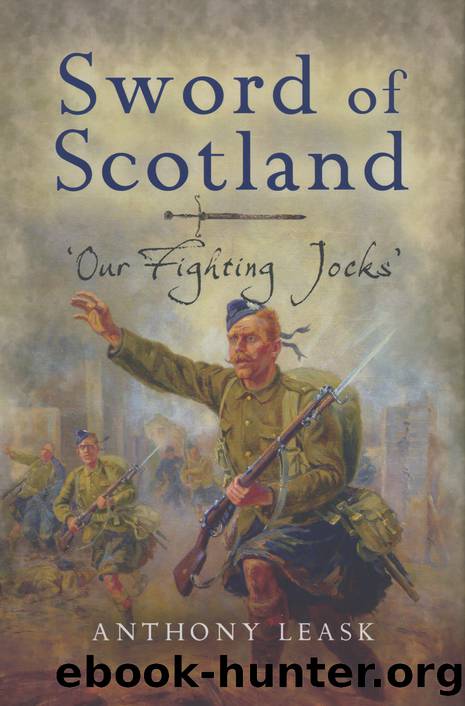Sword of Scotland by Anthony Leask

Author:Anthony Leask
Language: eng
Format: epub
ISBN: 9781473818804
Publisher: Pen & Sword Books
Published: 2007-08-15T00:00:00+00:00
With 65,000 Scotsmen enlisted in the British Army, the country was drained of volunteers. This led to the decision to raise ten regiments of Militia, as a quasi-third line for home defence, behind the regular forces and the Fencibles. They were raised under a quota ballot system from men between the ages of eighteen and fifty years old, on a county basis, with the Lords Lieutenant in charge. Men served for three years. Opposition to âconscriptionâ in the Militia led to numerous cases of abuse in Scotland as elsewhere, particularly at times when the threat was perceived to be low.
After the Fencibles were disbanded the Militia continued until it was incorporated into the regular army. The Volunteers and Yeomanry remained as locally recruited reserve forces, although often much reduced in size and inadequately trained during times of peace when local support was inevitably low. In due course they were to provide the basis of the Territorial Force. The close local connection between the various reserve forces and the counties from which they are drawn has continued to the present day.
There is no doubt that the regular Scottish regiments benefited considerably from the recruitment of these additional forces, and there were many transfers from the Fencibles and Militia to the regular units. Regulars, including those returning wounded or sick, came home periodically with orders to recruit from Fencibles and Militiamen. Their battle stories, no doubt embellished in the local hostelries, persuaded many a young man to enlist.
Throughout this period, regiments of the British Army tended to recruit where they were stationed. Most recruits for the Scottish regiments, however, still came from Scotland, many from the area in which the regiment was originally raised. Family and clan connection were exerting their age-old power on the new focus of the regiment and this was, and still is, immensely strong in Scotland. Recruiting parties had to have the authority of a Beating Order, which defined the towns and villages where they might operate. The Colonel of a regiment would naturally apply for this authority to recruit where his name, or those of his officers, would have influence on potential recruits, and this helped to maintain clan and family links.
With the peace which followed Waterloo came cuts and stagnation, though a new chapter in the story of Scotlandâs soldiers was soon to unfold in the imperial wars of the nineteenth century.
Download
This site does not store any files on its server. We only index and link to content provided by other sites. Please contact the content providers to delete copyright contents if any and email us, we'll remove relevant links or contents immediately.
Room 212 by Kate Stewart(4739)
The Crown by Robert Lacey(4573)
Endurance: Shackleton's Incredible Voyage by Alfred Lansing(4507)
The Iron Duke by The Iron Duke(4122)
The Rape of Nanking by Iris Chang(4023)
Killing England by Bill O'Reilly(3898)
Joan of Arc by Mary Gordon(3784)
Say Nothing by Patrick Radden Keefe(3725)
I'll Give You the Sun by Jandy Nelson(3273)
Shadow of Night by Deborah Harkness(3176)
Hitler's Monsters by Eric Kurlander(3164)
Mary, Queen of Scots, and the Murder of Lord Darnley by Alison Weir(3066)
Blood and Sand by Alex Von Tunzelmann(3056)
Darkest Hour by Anthony McCarten(3018)
Margaret Thatcher: The Autobiography by Thatcher Margaret(2971)
Eleanor & Park by Rainbow Rowell(2943)
Red Famine: Stalin's War on Ukraine by Anne Applebaum(2816)
Book of Life by Deborah Harkness(2720)
The One Memory of Flora Banks by Emily Barr(2685)
